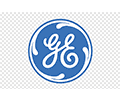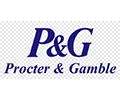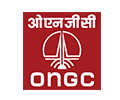Global Antifreeze Market
Source: The Report Cube
Understand The Key Trends Shaping This Market
Download Free SampleAntifreeze Market Insights & Analysis
The Global Antifreeze Market Report reached a value of nearly USD 5.02 billion in 2025. The market is assessed to grow at a CAGR of around 7.5%, during the forecast period of 2025-2032 to attain a value of around USD 8.32 billion in 2032. Mounting automobile production, elevated demand for high-performance coolants, and increasing industrial usages are all contributing to the Antifreeze Market's robust expansion. A prominent trend across the industry is the shift toward eco-friendly formulations as regulatory restrictions against conventional ethylene glycol-based products infuse due to toxicity issues.
Also, there is a considerable need for antifreeze products owing to the rising number of automobile fleets in evolving countries, specifically in the Asia-Pacific region. As EVs necessitate specific cooling systems for battery temperature management, the constant electrification of vehicles is also altering market demands. Along with this, producers are making cultured antifreeze formulas especially for EV applications as a result of this advancement.
Moreover, with the increasing usage of antifreeze solutions in HVAC systems, industrial heat transfer equipment, and renewable energy installations, the industrial sector provides yet another significant expansion path. Also, effective antifreeze solutions are essential for wind turbines & solar thermal systems in cold climates to continue operating proficiently, further creating a positive outlook for the Antifreeze Market.
Furthermore, longer service intervals & improved corrosion prevention are offered by prolonged-life formulations that are the result of technological advancements in antifreeze chemistry. Also, these high-end products are becoming more & more prevalent, especially in developed countries where consumers value performance & less upkeep, thus instigating the Antifreeze Market share.
Additionally, future industry expansion is possibly going to be influenced by sustainability concerns as bio-based & less hazardous propylene glycol formulations become more prevalent. Also, regulatory structures that support eco-friendly substitutes would accelerate this alteration. Dedicated, high-performance antifreeze products are also becoming more & more in demand as cooling systems in contemporary automobiles & industrial applications become more sophisticated. Further, with more individuals across the globe aiming for sustainable solutions & energy efficacy, the Antifreeze Market is presumed to upscale in the following years.
Global Antifreeze Market Upgrades & Recent Developments
2025:
- CCI Corporation completed a strategic merger with ThermalTech Solutions, strengthening its position in the industrial antifreeze segment and expanding its distribution network across North America and Europe.
- Sonax GmbH launched "Sonax CryoProtect," an innovative antifreeze concentrate containing graphene additives that improve thermal conductivity by up to 25%, targeting high-performance automotive applications.
2024:
- Royal Dutch Shell PLC launched its next-generation "Shell Coolant Ultra EV," specifically formulated for electric vehicle battery thermal management systems. The product offers enhanced heat transfer properties and improved electrical compatibility compared to conventional coolants.
- BASF SE introduced "Glysantin G70," a new organic acid technology (OAT) antifreeze that provides superior aluminum protection and extended service life of up to 5 years, targeting premium European automotive manufacturers.
- Old World Industries Inc. expanded its PEAK brand with a new line of biodegradable antifreeze products derived from corn-based glycerin, responding to increasing consumer demand for environmentally friendly alternatives.

Antifreeze Market Dynamics
-
Increasing Development of Automotive & Industrial Sectors to Escalate Market Demand
The expanding automobile sector is the key driver of the Antifreeze Market, specifically in the evolving industry landscape. Antifreeze demand is greatly compelled by increasing vehicle manufacturing, longer average vehicle lifespans, and escalating aftermarket services. Also, industrial-grade antifreeze solutions are in great demand owing to the growth of the industrial sector, including power production, chemical processing, and HVAC systems. Moreover, the requirement for efficient cooling systems to maintain ideal operating temperatures for delicate electronic components has been further infused by the global upsurge in data center construction.
-
Environmental & Regulatory Restrictions to Limit Market Growth
Environmental regulations about classic ethylene glycol-based items are becoming more & more stringent, which offers a considerable challenge to the Antifreeze Market. Also, regulators worldwide have placed restrictions on the usage & disposal of ethylene glycol owing to its extreme toxicity to both humans & wildlife. Furthermore, manufacturers are required to make considerable investments in generating eco-friendly substitutes while upholding performance necessities. Moreover, for Antifreeze Market companies, the complexity of compliance across various jurisdictions with dissimilar regulatory frameworks poses extra operational challenges, which might hinder industry growth & raise production expenses.
-
Growing Demand for Bio-based Antifreeze Solutions
The alteration toward sustainability presents a significant opportunity for innovations in bio-based antifreeze formulations. Glycerin derived from biodiesel production & propylene glycol from renewable sources provide encouraging substitutes to traditional petroleum-based products. These bio-based solutions address environmental issues while offering comparable performance characteristics. Also, early adopters of these technologies can gain competitive benefits by aligning with customers' preferences for environmentally responsible items & positioning themselves favorably amid tightening regulations on conventional antifreeze chemicals.
Antifreeze Market Segment-wise Analysis
By Product:
- Ethylene Glycol
- Propylene Glycol
- Glycerin
Ethylene Glycol accounts for the potential share of the Antifreeze Market. Ethylene glycol's great thermal qualities, affordability, and longstanding usage in production processes account for its dominance. Specifically, useful in areas with harsh winters, ethylene glycol provides noteworthy protection in extremely cold temperatures owing to its lowest freezing point among commercial antifreeze bases (-13°C in pure form & much inferior when combined with water).
Moreover, despite increasing environmental concerns about its toxicity, the Automotive Market remains the key customer of ethylene glycol-based antifreeze. Further, in response, manufacturers have improved formulations with cutting-edge corrosion inhibitors & lengthy service life to stay applicable across the Antifreeze Industry. Also, due to their greater heat transmission properties & affordability, ethylene glycol solutions are broadly utilized across the industrial sector, primarily in the production of electricity & chemical handling.
By Application:
- Automobile
- Aerospace
- Industrial Heat Transfer & Cooling Systems
The Automobile segment upholds the largest share of the Antifreeze Market. Owing to its essential function in preventing freeze-ups in cold weather & overheating during high-temperature operations, antifreeze is accountable for its leadership in automobile engine cooling systems. The need for OEM (original equipment manufacturer) & aftermarket antifreeze items is sturdy, given that there are more than 1.4 billion automobiles in the world's fleet & that around 100 million units are manufactured annually.
Furthermore, current progressions in car technology have elevated the requirement for antifreeze even more. Also, electric vehicles need advanced battery temperature management systems that utilize specific antifreeze compositions, even if they don't have conventional internal combustion engines. Further, a high-value sub-segment of the automotive application segment is generated by these specialty coolants, which must maintain thermal efficiency while providing the best electrical resistivity.
Regional Projection of the Global Antifreeze Industry
The Global Antifreeze Market is geographically diversified, covering:
- North America
- Europe
- South America
- The Middle East & Africa
- Asia-Pacific
The Asia-Pacific region dominates the Global Antifreeze Market, by capturing a substantial market share, and is predicted to flourish throughout the forecast period as well. China is the largest donor, with South Korea, Japan, and India following closely behind. The enormous automotive manufacturing capacity of the region, which produces more than 50% of all vehicles globally, and the fast-growing industrial sectors that require cooling solutions are the primary aspects motivating its ascendency.
Additionally, rising rates of car ownership in developing countries, such as Vietnam, Indonesia, and India, are impelling Antifreeze Market growth in the Asia-Pacific region as more individuals are observed to own cars owing to infused disposable incomes. Owing to the severe continental temperatures across the region, especially in Northern China & some parts of Japan, there is a higher requirement for OEM & aftermarket antifreeze solutions.
What Does Our Global Antifreeze Market Research Study Entail?
- The Global Antifreeze Market Research Report highlights the forecast growth rate (CAGR) by anticipating market size and share.
- The market analysis puts light upon the primary industry trends, driving aspects, potential opportunities, growth challenges, and other major factors.
- The Global Antifreeze Market Research Report entails details about the most critical shifts in market share in the prominent regions.
- Considering the statistics & the developments by the primary market competitors, our report also strives to demonstrate the most sought-after strategies of the key players.
Table of Contents
- Introduction
- Objective of the study
- Product Definition
- Market Segmentation
- Study Variables
- Research Methodology
- Secondary Data Points
- Companies Interviewed
- Primary Data Points
- Break Down of Primary Interviews
- Secondary Data Points
- Executive Summary
- Market Dynamics
- Drivers
- Challenges
- Opportunity Assessment
- Recent Trends and Developments
- Policy and Regulatory Landscape
- Global Antifreeze Market Overview (2020-2032)
- Market Size, By Value (in USD Billions)
- Market Share, By Product
- Ethylene Glycol
- Propylene Glycol
- Glycerin
- Market Share, By Application
- Automobile
- Aerospace
- Industrial Heat Transfer & Cooling Systems
- Market Share, By Technology
- Organic Acid Technology Antifreeze (OAT)
- Inorganic Acid Technology Antifreeze (IAT)
- Hybrid Organic Acid Technology (HOAT)
- Market Share, By Region
- North America
- South America
- Europe
- The Middle East & Africa
- Asia-Pacific
- Market Share, By Company
- Revenue Shares
- Competition Characteristics
- North America Antifreeze Market Overview (2020-2032)
- Market Size, By Value (in USD Billions)
- Market Share, By Product
- Market Share, By Application
- Market Share, By Technology
- By Country
- The US
- Canada
- Mexico
- The US Antifreeze Market Overview (2020-2032)
- Market Share, By Product
- Market Share, By Application
- Market Share, By Technology
- Canada Antifreeze Market Overview (2020-2032)
- Market Share, By Product
- Market Share, By Application
- Market Share, By Technology
- Mexico Antifreeze Market Overview (2020-2032)
- Market Share, By Product
- Market Share, By Application
- Market Share, By Technology
- South America Antifreeze Market Overview (2020-2032)
- Market Size, By Value (in USD Billions)
- Market Share, By Product
- Market Share, By Application
- Market Share, By Technology
- By Country
- Brazil
- Argentina
- Rest of South America
- Brazil Antifreeze Market Overview (2020-2032)
- Market Share, By Product
- Market Share, By Application
- Market Share, By Technology
- Argentina Antifreeze Market Overview (2020-2032)
- Market Share, By Product
- Market Share, By Application
- Market Share, By Technology
- Europe Antifreeze Market Overview (2020-2032)
- Market Size, By Value (in USD Billions)
- By Product
- By Application
- By Technology
- By Country
- Germany
- The UK
- France
- Spain
- Italy
- Rest of Europe
- Germany Antifreeze Market Overview (2020-2032)
- Market Share, By Product
- Market Share, By Application
- Market Share, By Technology
- France Antifreeze Market Overview (2020-2032)
- Market Share, By Product
- Market Share, By Application
- Market Share, By Technology
- The UK Antifreeze Market Overview (2020-2032)
- Market Share, By Product
- Market Share, By Application
- Market Share, By Technology
- Spain Antifreeze Market Overview (2020-2032)
- Market Share, By Product
- Market Share, By Application
- Market Share, By Technology
- Italy Antifreeze Market Overview (2020-2032)
- Market Share, By Product
- Market Share, By Application
- Market Share, By Technology
- The Middle East & Africa Antifreeze Market Overview (2020-2032)
- Market Size, By Value (in USD Billions)
- By Product
- By Application
- By Technology
- By Country
- The UAE
- Saudi Arabia
- South Africa
- Rest of the Middle East & Africa
- The UAE Antifreeze Market Overview (2020-2032)
- Market Share, By Product
- Market Share, By Application
- Market Share, By Technology
- Saudi Arabia Antifreeze Market Overview (2020-2032)
- Market Share, By Product
- Market Share, By Application
- Market Share, By Technology
- South Africa Antifreeze Market Overview (2020-2032)
- Market Share, By Product
- Market Share, By Application
- Market Share, By Technology
- Asia-Pacific Antifreeze Market Overview (2020-2032)
- Market Size, By Value (in USD Billions)
- By Product
- By Application
- By Technology
- By Country
- China
- India
- Japan
- South Korea
- Australia
- Rest of Asia-Pacific
- China Antifreeze Market Overview (2020-2032)
- Market Share, By Product
- Market Share, By Application
- Market Share, By Technology
- India Antifreeze Market Overview (2020-2032)
- Market Share, By Product
- Market Share, By Application
- Market Share, By Technology
- Japan Antifreeze Market Overview (2020-2032)
- Market Share, By Product
- Market Share, By Application
- Market Share, By Technology
- South Korea Antifreeze Market Overview (2020-2032)
- Market Share, By Product
- Market Share, By Application
- Market Share, By Technology
- Austraila Antifreeze Market Overview (2020-2032)
- Market Share, By Product
- Market Share, By Application
- Market Share, By Technology
- Competitive Outlook (Company Profile - Partila List)
- Royal Dutch Shell PLC
- Company Overview
- Business Segments
- Strategic Alliances/Partnerships
- Recent Developments
- CCI Corporation
- Company Overview
- Business Segments
- Strategic Alliances/Partnerships
- Recent Developments
- BASF SE
- Company Overview
- Business Segments
- Strategic Alliances/Partnerships
- Recent Developments
- Old World Industries Inc.
- Company Overview
- Business Segments
- Strategic Alliances/Partnerships
- Recent Developments
- KMCO LLC
- Company Overview
- Business Segments
- Strategic Alliances/Partnerships
- Recent Developments
- Sonax GmbH
- Company Overview
- Business Segments
- Strategic Alliances/Partnerships
- Recent Developments
- Others
- Company Overview
- Business Segments
- Strategic Alliances/Partnerships
- Recent Developments
- Royal Dutch Shell PLC
- Disclaimer
List of Figure
Figure 1: Market Segmentation Framework
Figure 2: Study Variables Overview
Figure 3: Research Methodology Flowchart
Figure 4: Secondary Data Points Categories
Figure 5: Companies Interviewed for Primary Research
Figure 6: Primary Data Points Breakdown
Figure 7: Executive Summary – Market Snapshot
Figure 8: Key Market Drivers
Figure 9: Market Challenges Overview
Figure 10: Opportunity Assessment in the Antifreeze Market
Figure 11: Recent Trends and Developments in Antifreeze
Figure 12: Policy and Regulatory Landscape Overview
Figure 13: Global Antifreeze Market Size (2020-2032) in USD Billion
Figure 14: Global Antifreeze Market Share by Product (Ethylene Glycol, Propylene Glycol, Glycerin)
Figure 15: Global Antifreeze Market Share by Application (Automobile, Aerospace, Industrial Heat Transfer & Cooling Systems)
Figure 16: Global Antifreeze Market Share by Technology (OAT, IAT, HOAT)
Figure 17: Global Antifreeze Market Share by Region
Figure 18: North America Antifreeze Market Size (2020-2032) in USD Billion
Figure 19: North America Antifreeze Market Share by Product
Figure 20: North America Antifreeze Market Share by Application
Figure 21: North America Antifreeze Market Share by Technology
Figure 22: North America Antifreeze Market Share by Country (US, Canada, Mexico)
Figure 23: US Antifreeze Market Share by Product
Figure 24: US Antifreeze Market Share by Application
Figure 25: US Antifreeze Market Share by Technology
Figure 26: Canada Antifreeze Market Share by Product
Figure 27: Canada Antifreeze Market Share by Application
Figure 28: Canada Antifreeze Market Share by Technology
Figure 29: Mexico Antifreeze Market Share by Product
Figure 30: Mexico Antifreeze Market Share by Application
Figure 31: Mexico Antifreeze Market Share by Technology
Figure 32: South America Antifreeze Market Size (2020-2032) in USD Billion
Figure 33: South America Antifreeze Market Share by Product
Figure 34: South America Antifreeze Market Share by Application
Figure 35: South America Antifreeze Market Share by Technology
Figure 36: South America Antifreeze Market Share by Country (Brazil, Argentina, Rest of South America)
Figure 37: Brazil Antifreeze Market Share by Product
Figure 38: Brazil Antifreeze Market Share by Application
Figure 39: Brazil Antifreeze Market Share by Technology
Figure 40: Argentina Antifreeze Market Share by Product
Figure 41: Argentina Antifreeze Market Share by Application
Figure 42: Argentina Antifreeze Market Share by Technology
Figure 43: Europe Antifreeze Market Size (2020-2032) in USD Billion
Figure 44: Europe Antifreeze Market Share by Product
Figure 45: Europe Antifreeze Market Share by Application
Figure 46: Europe Antifreeze Market Share by Technology
Figure 47: Europe Antifreeze Market Share by Country (Germany, UK, France, Spain, Italy, Rest of Europe)
Figure 48: Germany Antifreeze Market Share by Product
Figure 49: Germany Antifreeze Market Share by Application
Figure 50: Germany Antifreeze Market Share by Technology
Figure 51: France Antifreeze Market Share by Product
Figure 52: France Antifreeze Market Share by Application
Figure 53: France Antifreeze Market Share by Technology
Figure 54: UK Antifreeze Market Share by Product
Figure 55: UK Antifreeze Market Share by Application
Figure 56: UK Antifreeze Market Share by Technology
Figure 57: Spain Antifreeze Market Share by Product
Figure 58: Spain Antifreeze Market Share by Application
Figure 59: Spain Antifreeze Market Share by Technology
Figure 60: Italy Antifreeze Market Share by Product
Figure 61: Italy Antifreeze Market Share by Application
Figure 62: Italy Antifreeze Market Share by Technology
Figure 63: Middle East & Africa Antifreeze Market Size (2020-2032) in USD Billion
Figure 64: Middle East & Africa Antifreeze Market Share by Product
Figure 65: Middle East & Africa Antifreeze Market Share by Application
Figure 66: Middle East & Africa Antifreeze Market Share by Technology
Figure 67: Middle East & Africa Antifreeze Market Share by Country (UAE, Saudi Arabia, South Africa, Rest of MEA)
Figure 68: UAE Antifreeze Market Share by Product
Figure 69: UAE Antifreeze Market Share by Application
Figure 70: UAE Antifreeze Market Share by Technology
Figure 71: Saudi Arabia Antifreeze Market Share by Product
Figure 72: Saudi Arabia Antifreeze Market Share by Application
Figure 73: Saudi Arabia Antifreeze Market Share by Technology
Figure 74: South Africa Antifreeze Market Share by Product
Figure 75: South Africa Antifreeze Market Share by Application
Figure 76: South Africa Antifreeze Market Share by Technology
Figure 77: Asia-Pacific Antifreeze Market Size (2020-2032) in USD Billion
Figure 78: Asia-Pacific Antifreeze Market Share by Product
Figure 79: Asia-Pacific Antifreeze Market Share by Application
Figure 80: Asia-Pacific Antifreeze Market Share by Technology
Figure 81: Asia-Pacific Antifreeze Market Share by Country (China, India, Japan, South Korea, Australia, Rest of Asia-Pacific)
Figure 82: China Antifreeze Market Share by Product
Figure 83: China Antifreeze Market Share by Application
Figure 84: China Antifreeze Market Share by Technology
Figure 85: India Antifreeze Market Share by Product
Figure 86: India Antifreeze Market Share by Application
Figure 87: India Antifreeze Market Share by Technology
Figure 88: Japan Antifreeze Market Share by Product
Figure 89: Japan Antifreeze Market Share by Application
Figure 90: Japan Antifreeze Market Share by Technology
Figure 91: South Korea Antifreeze Market Share by Product
Figure 92: South Korea Antifreeze Market Share by Application
Figure 93: South Korea Antifreeze Market Share by Technology
Figure 94: Australia Antifreeze Market Share by Product
Figure 95: Australia Antifreeze Market Share by Application
Figure 96: Australia Antifreeze Market Share by Technology
Figure 97: Competitive Landscape – Revenue Shares of Key Players
Figure 98: Royal Dutch Shell PLC – Business Segments and Strategic Alliances
Figure 99: CCI Corporation – Business Segments and Strategic Alliances
Figure 100: BASF SE – Business Segments and Strategic Alliances
Figure 101: Old World Industries Inc. – Business Segments and Strategic Alliances
Figure 102: KMCO LLC – Business Segments and Strategic Alliances
Figure 103: Sonax GmbH – Business Segments and Strategic Alliances
Figure 104: Other Companies – Business Segments and Strategic Alliances
List of Table
Table 1: Objective of the Study
Table 2: Product Definition and Specifications
Table 3: Market Segmentation Details
Table 4: Study Variables Description
Table 5: Research Methodology Summary
Table 6: Secondary Data Sources
Table 7: Companies Interviewed for Primary Research
Table 8: Primary Data Collection Details
Table 9: Breakdown of Primary Interviews by Region and Type
Table 10: Global Antifreeze Market Size (2020-2032) – Historical and Forecast Values (USD Billion)
Table 11: Global Antifreeze Market Share by Product (%)
Table 12: Global Antifreeze Market Share by Application (%)
Table 13: Global Antifreeze Market Share by Technology (%)
Table 14: Global Antifreeze Market Share by Region (%)
Table 15: North America Market Size and Forecast (USD Billion)
Table 16: North America Market Share by Product (%)
Table 17: North America Market Share by Application (%)
Table 18: North America Market Share by Technology (%)
Table 19: North America Market Share by Country (%)
Table 20: US Market Share by Product, Application, and Technology (%)
Table 21: Canada Market Share by Product, Application, and Technology (%)
Table 22: Mexico Market Share by Product, Application, and Technology (%)
Table 23: South America Market Size and Forecast (USD Billion)
Table 24: South America Market Share by Product (%)
Table 25: South America Market Share by Application (%)
Table 26: South America Market Share by Technology (%)
Table 27: South America Market Share by Country (%)
Table 28: Brazil Market Share by Product, Application, and Technology (%)
Table 29: Argentina Market Share by Product, Application, and Technology (%)
Table 30: Europe Market Size and Forecast (USD Billion)
Table 31: Europe Market Share by Product (%)
Table 32: Europe Market Share by Application (%)
Table 33: Europe Market Share by Technology (%)
Table 34: Europe Market Share by Country (%)
Table 35: Germany Market Share by Product, Application, and Technology (%)
Table 36: France Market Share by Product, Application, and Technology (%)
Table 37: UK Market Share by Product, Application, and Technology (%)
Table 38: Spain Market Share by Product, Application, and Technology (%)
Table 39: Italy Market Share by Product, Application, and Technology (%)
Table 40: Middle East & Africa Market Size and Forecast (USD Billion)
Table 41: Middle East & Africa Market Share by Product (%)
Table 42: Middle East & Africa Market Share by Application (%)
Table 43: Middle East & Africa Market Share by Technology (%)
Table 44: Middle East & Africa Market Share by Country (%)
Table 45: UAE Market Share by Product, Application, and Technology (%)
Table 46: Saudi Arabia Market Share by Product, Application, and Technology (%)
Table 47: South Africa Market Share by Product, Application, and Technology (%)
Table 48: Asia-Pacific Market Size and Forecast (USD Billion)
Table 49: Asia-Pacific Market Share by Product (%)
Table 50: Asia-Pacific Market Share by Application (%)
Table 51: Asia-Pacific Market Share by Technology (%)
Table 52: Asia-Pacific Market Share by Country (%)
Table 53: China Market Share by Product, Application, and Technology (%)
Table 54: India Market Share by Product, Application, and Technology (%)
Table 55: Japan Market Share by Product, Application, and Technology (%)
Table 56: South Korea Market Share by Product, Application, and Technology (%)
Table 57: Australia Market Share by Product, Application, and Technology (%)
Table 58: Competitive Landscape – Company Revenue and Market Share (%)
Table 59: Royal Dutch Shell PLC – Key Financials and Business Segments
Table 60: CCI Corporation – Key Financials and Business Segments
Table 61: BASF SE – Key Financials and Business Segments
Table 62: Old World Industries Inc. – Key Financials and Business Segments
Table 63: KMCO LLC – Key Financials and Business Segments
Table 64: Sonax GmbH – Key Financials and Business Segments
Table 65: Other Companies – Key Financials and Business Segments
Top Key Players & Market Share Outlook
- Royal Dutch Shell PLC
- CCI Corporation
- BASF SE
- Old World Industries Inc.
- KMCO LLC
- Sonax GmbH
- Others
Frequently Asked Questions








